The Legend of Zelda: Skyward Sword
Wii
Nintendo EAD
Nintendo
Action Adventure
Everyone 10+
November 18, 2011 (EU)
November 20, 2011 (NA)
November 23, 2011 (JP)
November 24, 2011 (AU)
Let me make this clear from the start: I wanted to hate this game. I was one of the most vocal skeptics of a fully motion controlled Zelda, and the more I heard of Skyward Sword pre-release, the more I was convinced it would be the worst in its series. And I’ve long been convinced that no Zelda game would ever top Ocarina of Time.
I couldn’t have been more wrong.
Skyward Sword is not only the best Zelda game Nintendo has ever produced, it’s the best game Nintendo has ever produced.
It’s one of the most immersive games ever created, and it’s a shining example of motion controls done right. And as someone who has long considered Ocarina of Time to be the greatest game – not just Zelda game – ever made, it’s no small feat for me to say that Skyward Sword is better.
Chronologically, Skyward Sword is the first Zelda game, taking place in a time where the Hylians live in a land far above the clouds. The citizens of Skyloft, as this land is known, ride around on giant birds known as Loftwings, with which they are bonded at the time of their birth. But the Loftwings never venture below the cloud barrier that separates Skyloft from the Surface below. Our hero, Link, is a student at the Knight Academy, a school which trains young pupils to become flying Knights of Skyloft, the protectors of the populace.
For the first time, Link and Zelda are childhood friends. They’ve known each other all their lives – Zelda being the daughter of the Academy’s headmaster – and the first few hours of the game are devoted to developing their relationship as they prepare for the important Wing Ceremony. The festivities are cut short, however, as Zelda gets knocked off her Loftwing by a freak tornado and plummets to the Surface below. From there, of course, it’s up to Link to save the day, and the adventure truly begins in earnest. These first few hours of the game, while slow from a gameplay perspective, give Link and Zelda’s characters more development than they’ve received in any previous iteration.
And that carries over into the rest of the characters and the plot itself. While none of the other characters are quite as fleshed out as Link and Zelda, many of them receive at least some development through sidequests, so the citizens of Skyloft are more than a bunch of random NPCs. One of the biggest issues with Ocarina and Twilight Princess was that the sidequests amounted to little more than glorified fetch quests, and the citizens of Hyrule were bland, cookie-cutter NPCs. Majora’s Mask and, to a lesser extent, The Wind Waker, remedied this a lot by giving backstory to many of the NPCs in those games, and Skyward Sword follows suit. Nearly everyone in Skyloft has a life outside standing outside and spouting off random advice, if you just take the time to deviate from the main quest and help them out.
The plot itself has been fleshed out as well. While there’s still no voice acting and all dialogue is presented through text boxes, the plot is a lot less secondary than it is in previous Zelda games. This is the most cinematic Zelda yet, and there are several lengthy cutscenes throughout the game – many of which will have you on the edge of your seat. The game is obviously not as heavy-handed with its story as a Metal Gear Solid or Final Fantasy, for example, but it’s still leaps and bounds beyond the traditional “rescue the princess” story Nintendo usually churns out. You’ll even find some connections to other Zelda games, and even the likely origins of a certain character who isn’t even in this game.
And while the main plot is serious and even somewhat dark at times, the game has a great sense of humor as well. Ghirahim, the main villain, is a shining example of the perfect balance the game strikes between the heavy and the light-hearted moments, as his spastic, flamboyant personality and constant temper tantrums hide a truly formidable, sinister opponent who is ruthless in his pursuit of Zelda. Meanwhile, Groose, another student at the Knight Academy, constantly tries to best Link, and puts on a tough guy routine to often hilarious results.
Link himself is the most expressive incarnation of the character since The Wind Waker. His facial expressions, his emotions, and his mannerisms all serve to give him more of a personality than previous Links. Throughout the game he grows from a lazy, carefree student who only wants to sleep into a brave, responsible hero. There’s also plenty of romantic tension between himself and Zelda, and even a sort of love triangle when Groose gets thrown into the mix, though Zelda doesn’t share the same feelings toward Groose that he has for her.
While Nintendo has taken great steps forward in both plot and character development, they haven’t left the gameplay in the dark. Skyward Sword isn’t a revolution for the series, it’s an evolution. Zelda didn’t need to be totally remade into something different, it just needed updating and tweaking, and Nintendo has gone above and beyond expectations. The game feels fresh without throwing out the things that make Zelda Zelda.
The most obvious newcomer to the table is full motion control. Gone is the relentless, pointless waggle of Twilight Princess, replaced by fluid, almost 1:1 motion control with Wii MotionPlus. Slash left, and Link slashes left. Slash vertically, and he does the same. Hold up your Nunchuk, and Link holds up his shield. Thrust it forward, and Link does a shield bash. Of course, this opens up plenty of new possibilities for how enemies fight as well, and you will have to be precise with your slashes to penetrate their defenses. Deku Babas require a precise horizontal or vertical slash to sever their mouths, Stalfos have two (and later varieties, four) swords which they will use to block you from many directions, and Beamos must be cut down to size before you can put out their eyes with a forward thrust. Waggling the remote like a maniac won’t do you any good here – it will likely just get you killed. This is the Zelda experience we wanted when the Wii was first revealed, and the swordplay controls are near-perfect.
I say near, because there’s one blatant offender that just plain doesn’t work: the forward jab. Many enemies require you to jab forward to hit a weak point, and the game seems to have trouble recognizing it, often performing a slash of some sort before it finally registers the thrust. In the heat of battle, you may also find that your sword slashes aren’t quite going how you want them to, but nine times out of ten you’ll discover that this was because things were so hectic you weren’t lining your slashes up precisely. It’s a lot to think about, and there’s a great level of complexity to the combat in Skyward Sword.
The out-of-combat controls work great for the most part as well. Flying on your Loftwing is entirely motion controlled, and your bird is responsive to even minor adjustments you make. Nintendo has finally mastered this concept after abysmal attempts in Twilight Princess and the Super Mario Galaxy series. Less intuitive, however, is swimming, which controls in a similar (but not identical) manner as flying. While the underwater controls work, for the most part, it’s still very hard to be precise when you’re grabbing an item underwater, for example. A late-game underwater fetch quest only serves to make this weakness more obvious, since the items you’re collecting are time-limited, and if you happen to miss one in a particular sequence you have to start that sequence over again. For the most part though, underwater sections don’t require quite that much precision, and then those controls are just fine.
Items – even series basics such as bombs – feature intuitive controls that add a level of immersion to the game and give you more control over their usage than ever. With bombs, you can control their trajectory and either roll or throw them with great precision. The Beetle, one of the first items you receive, can be used to grab distant objects and even divebomb enemies, and is controlled entirely with Wii MotionPlus flying controls. There’s an option to pull the Nunchuk back just like a real bow when you’re preparing to shoot the bow. Aiming, somewhat surprisingly, is not done with the infrared sensor but with the gyroscope, which takes some getting used to, and often requires a simple recalibration of the pointer (done by simply pressing down on the d-pad).
And that’s just a smattering of the items in Skyward Sword. The game features some of the most creative items in the Zelda series – even moreso than off-the-wall items like the Spinner and Dominion Rod from Twilight Princess. Unlike in Twilight Princess, however, you’ll make full use of your arsenal throughout the game. Gone are the days of “Get item, use item to complete dungeon and beat boss, and never use item again.” The Beetle may be one of the first items you get, but by the end of the game you’ll still be using it to complete puzzles and make your way through dungeons.
Selecting these items is done on-the-fly, without a break in combat, by holding down the B button. The game never pauses, and therefore items often become integral to your success in combat. Gone is the safety of a pause in combat while you select a potion from your bag – it all happens in realtime now. Items such as shields, bottles, and upgrades (to your quiver or bomb bag, for example) are held in a separate Adventure Pouch, which can only hold a limited number of items. All excess must be left at the Item Check in Skyloft, which means that you need to plan in advance what items you need to take with you on each leg of your journey.
The new upgrade system also adds a new level of depth to items. During your journey you’ll find various materials and treasures, which can be used to upgrade your equipment. For example, you can upgrade your Beetle to go faster and fly farther, or your bow to do more damage, or your quiver to hold more arrows. It’s a fairly basic system, but it’s still fun and adds a light RPG element to the series.
A brief glance at the HUD (which is customizable to be as minimal or as intrusive as you possibly want it to be) will show two new additions to the gameplay. The first is a shield meter. Shields wear down as they take abuse now. You can repair them at the bazaar in Skyloft or with a special potion, but if the meter runs out they break and you have to buy a new one. The second major new addition is a stamina meter, which appears when Link sprints, climbs vines, spin attacks, moves blocks, or otherwise exerts himself. This regenerates very quickly, but if you let it run all the way down Link will be totally helpless for several seconds, either plunging him to his doom or letting enemies beat the crap out of him until he regains his breath.
The overworld is another fairly radical departure for the series. Gone is the open, barren overworld that serves mostly as a means for getting from one place to another. Skyward Sword’s overworld is split into two segments: the Sky and the Surface. The Sky is an open expanse dotted by small islands, with Skyloft in the center, which you navigate with your Loftwing. It’s not unlike the Great Sea from TWW, except much smaller, and the islands are much less significant. The Sky barely qualifies as an overworld – it’s more of a hub, with portals to the three main sections of the Surface.
The real overworld is the Surface, which is divided into the aforementioned three areas: Faron Woods, Eldin Volcano, and Lanayru Desert. While the lack of a connected overworld takes away the exploration aspect of the series somewhat, these three areas are so densely packed that there’s still plenty to find and do. Taking a page from the Metroid series, you’ll visit all three of these areas early in the game, and later in the game you’ll return through these areas with new objectives, unlocking new portions of each area along the way. While the backtracking will put off some people, there are enough changes to each area and enough new content with each subsequent trip that it rarely feels like you’re retreading territory you’ve already gone through. Sometimes you might get the feeling that some sections of the game serve as nothing but filler and padding, but that’s very rare.
In previous Zeldas, the overworld was more of a tool to get you from one dungeon to the other. Skyward Sword throws all this out the window and blurs the lines between overworld and dungeon. You’ll spend hours navigating between dungeons, and all the while you’ll be solving puzzles, finding keys and other collectibles, and doing other “dungeon-y” stuff when you’re not even in a dungeon.
But when you do get to a dungeon, you’re in for a treat. The first couple dungeons are standard fare and might have you scratching your head and wondering what the fuss was about, but the rest of the dungeons are master classes in dungeon design. They’re by far some of, if not the best dungeons in the series, in some of the most unique settings we’ve ever seen in any game and nailing the atmosphere of these settings, and providing some of the most creative, devious puzzles we’ve seen in a Zelda game. The dungeons never drag and constantly do something creative – just to put it in perspective, there’s not a single torch puzzle in the entirety of Skyward Sword. And of course each dungeon culminates in a climactic showdown with a boss, and Skyward Sword’s boss battles are among the most fun, challenging, and intense in the series. There are even overworld bosses, which often come out of left field to provide a new challenge.
Throughout the game, Link’s spirit will be tested through several Silent Realms. These trials, clearly influenced by the stealth sections of the DS Zelda games, have Link running through a portion of each region in the game collecting Tears of Light while avoiding invincible enemies called Guardians. If a Guardian strikes Link, he has to restart the entire trial again. Thankfully, collecting a Tear freezes the Guardians for a full 90 seconds, unless you get spotted by lamp-carrying Watchers or step in Waking Water, both of which bring the Guardians to life instantly. Each of these sections is very intense and you’re likely to have some heart-pounding moments yourself while Link’s spirit undergoes its trials.
You open each Silent Realm by playing a melody on your harp. Unfortunately, the harp is the weakest instrument the series has ever seen. It’s really not instrumental (no pun intended) to gameplay at all, and basically seems shoehorned in. You strum the Wii Remote in rhythm to unlock each Silent Realm or uncover secrets, and…that’s about it. It’s not integrated into the actual gameplay, unlike the Ocarina of Time or Wind Waker from their respective games.
The game is beautiful, with a striking impressionist art style. Colors are bright and vivid, but yet the game still has a realistic look to it. It really strikes a balance between the cartoon style of The Wind Waker and the realistic style of Twilight Princess, and it’s honestly the type of style that I picture the Zelda series having as a natural progression from the N64 titles. The game pushes the Wii hardware to the limit, and while it’s not in HD and the framerate hiccups every now and then, it still holds its own against some of the graphical hard-hitters on other consoles.
And the soundtrack is breathtaking. Long have gamers wished for an orchestrated Zelda soundtrack, and Nintendo finally delivered. The music is epic in scope and some of the best in the series. The music adds to the atmosphere of the game, from the techno beats of mining facilities, to the eerie hush of an underground crypt, and the thundering, epic final boss theme. The piece that plays when you take off flying is quite possibly the most epic, memorable track from the game, and it really adds to the “holy crap” moment the first time you dive off a platform, jump onto your bird, and soar through the skies.
Skyward Sword will likely take you 30-35 hours to complete, and that’s without doing sidequests. With sidequests you’re looking at a 50-60 hour game, making it the longest game in the series. And after you beat the game, there’s the option of a super-hard second quest – titled “Hero Mode.” The main quest itself sometimes feels padded, but overall it’s an incredible journey from start to finish. I have to stretch to think of anything negative to say about the game beyond simple nitpicks here and there: there are a very few minor, minor control problems, the game is really slow to get rolling, and there are a few minor issues (like a nagging screen that pops up when you pick up collectibles, slow text scrolling speed, and the lack of a decent musical instrument). But there’s nothing substantially negative about the game – it exudes a level of polish that is unheard of in most games today, and it’s an experience everyone should try.
A 10 doesn’t necessarily signify a perfect game – but it’s a score that 4P only gives to games that are the cream of the crop: true masterpieces. I’ve been a gamer for years and have never even considered giving a game a score of a perfect 10, and it’s not something I’m doing lightly. But Skyward Sword represents a new pinnacle for the Zelda series and gaming in general, and it’s an immersive experience that is unrivaled by pretty much any other game today or ever. Nintendo has crafted a true masterpiece with this game: one worthy of awarding the highest praise we can give, and it’s the most fitting tribute to Zelda’s 25th anniversary they could ever have produced.
Immersive motion controls.
Incredibly designed dungeons.
Beautiful art style.
Epic orchestrated soundtrack.
True evolution of the series.
Takes a while to get started.
Some filler and pacing issues.
Very minor control issues at times











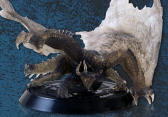









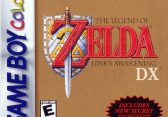



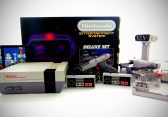



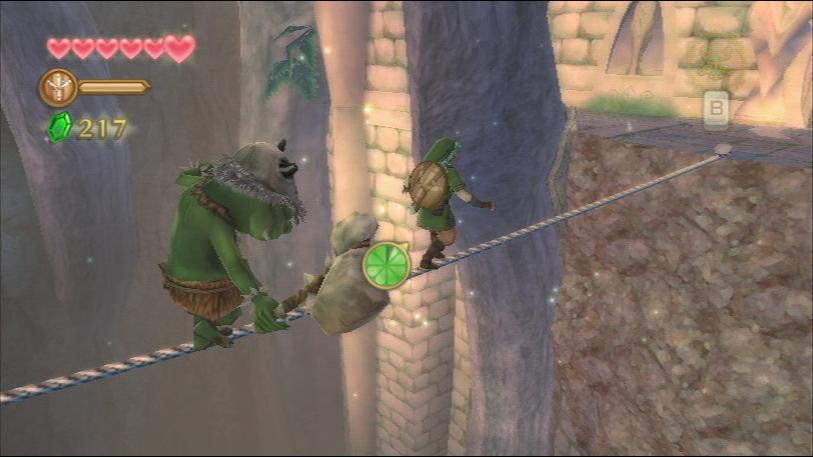



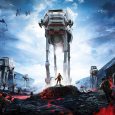

Another great review that makes me really excited to play the game during the holiday break.
I’m just wondering what your opinion is on what seems to be a common criticism in other reviews: dowsing. Do you think it positively adds to the gameplay or is it a nuisance?
Woah, meant to reply to your question earlier. Sorry. @_@
Dowsing is more of a “meh” thing to me. It has its uses, but the constant nagging to do it is kind of annoying. Overall I didn’t think it really added that much to the game, but at the same time it wasn’t a big enough nuisance to really affect my enjoyment of the game.